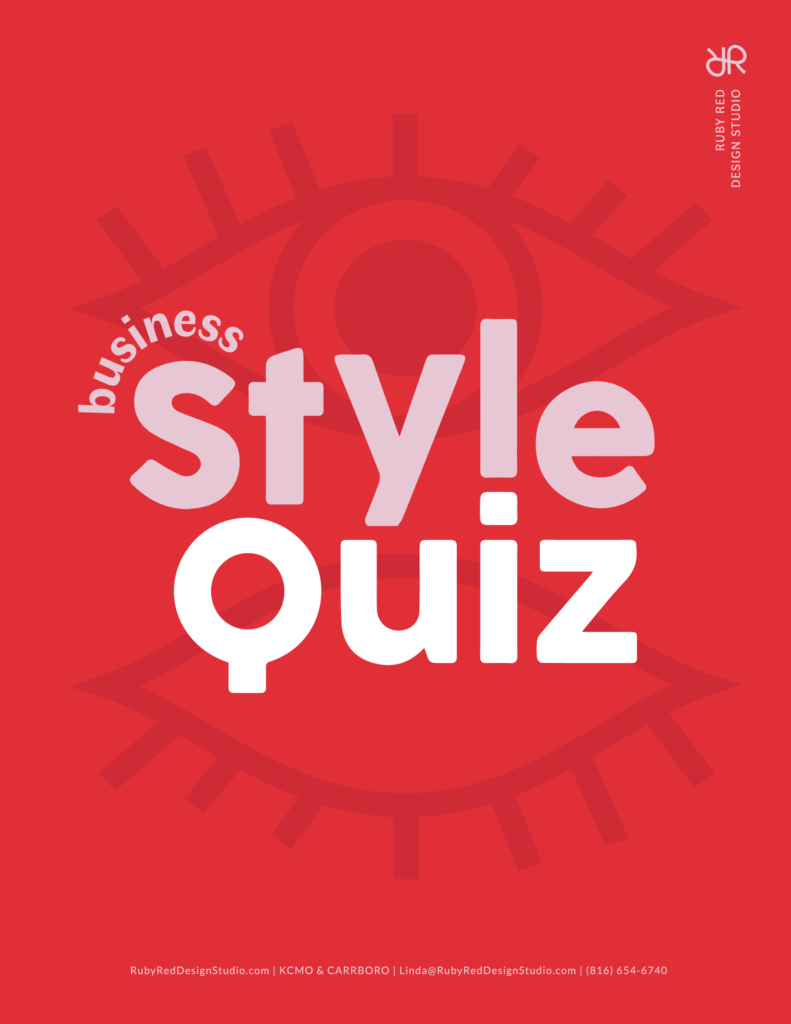TECH GLOSSARY
Language can create barriers or break them down. I’d like to tear down the barriers that make tech scary.
- To search the text on this page for a particular term, on a PC hit (Ctrl+F) and on a Mac hit (⌘+F).
404
Error returned when the page you are looking for cannot be found. It’s a best practice for every website to have one!
Above the fold
Carried over from newspaper design; refers to the content that would be viewed on a folded newspaper and is now applied to content that is seen on a screen without having to scroll.
Accessibility
Allows people with disabilities to access the site, including visually impaired visitors using screen readers, hearing impaired visitors using no sound, color blind people, or those with other disabilities. (https://www.essentialaccessibility.com/blog/how-to-ensure-website-compliance-accessibility-standards/)
Backend
The “tech” side of the website where edits are made and coding is done. This is the side that your viewers don’t have access to!
Bandwidth
When you hear this term from your hosting provider, it refers to the total amount of data transmitted from your host to people viewing your site on the web. Most providers have limits, after which there are overage charges.
Bounce Rate
If a visitor lands on a page on your website and leaves without visiting any other page, that’s known as a bounce. Your bounce rate is the number of visitors who do that. High bounce rates can mean that your content is not compelling or that your navigation is unclear.
Browser
Program on your computer used to explore the web! In 2020, the most popular browser is currently Chrome (60%) followed by Safari (15%), Internet Explorer (9%), Firefox (6%) and Opera (3%). From https://www.w3counter.com/globalstats.php
Cache
Have you been asked to clear your cache and wondering what that is? Cached files are saved by your web browser so that the next time you visit, the page loads faster. Sometimes, this means you are seeing an outdated page and clearing your cache can help. Google “clear cache” along with your browser for up to date instructions.
Call to Action
Basically, a sign. Calls to action direct your viewers to do something: sign up for a newsletter, click on a link, make a purchase, watch a video, contact you. They are an important navigational tool.
CMS
A Content Management System provides an interface between the code of a website and you, so that you can more easily make edits and manage content. We use WordPress, as it’s open source and powers a majority of the web.
Cookies
Small pieces of data that are saved by your web browser. They track your activity & preferences. Cookies store info about whether you are logged in or not, what pages you have visited, and things you have placed in your cart. They are essential for modern websites. You’re hearing more about them because GDPR requires websites to tell visitors that they use cookies. Not to worry – they are quite safe. Only the website that creates a cookie can read it. As long as you trust the site you’re visiting, you’re fine.
CSS
Cascading Style Sheets are used to define the look and feel of a web page. I know how to write CSS so you don’t have to learn.
DNS
Domain Name System or Server. DNS converts the number that is your IP address (151.101.66.159) into the domain/URL (google.com) that people type into their browsers.
Domain
Domains are also known as URLs or website addresses. To get really (really!) basic: your domain (or URL or web address) is the string of letters that you type into the address bar of a web browser to go directly to your web page. In your virtual house, your domain is the address of your virtual house–the string of numbers and letters that help others identify it.
Embedding
Visually connecting content from one site on the web to another with a short bit of code. Examples include embedding a video from YouTube, a post from Facebook, or a Google Map.
Favicon
Tiny little image that shows up next to the site name in your browser tab.
Firewall
Protects a site from bad actors. They monitor inbound and outbound network traffic to determine whether or not to allow traffic through, based on security standards.
Frontend
The side of your site that all viewers see.
FTP
File Transfer Protocol is used to move files from a computer to a server.
GDPR
General Data Protection Regulation – An EU law from 2016 that protects privacy and data for web users. It requires websites to ask visitors to opt-in to emails and consent to cookies. (https://www.wired.co.uk/article/what-is-gdpr-uk-eu-legislation-compliance-summary-fines-2018)
GIF
A file format that can include motion and transparency. Short for Graphic Interchange File, it’s pronounced with a hard G – like gift without the t! (Don’t worry – I’ve said it wrong for YEARS.)
HTML
Hyper Text Markup Protocol. The language the web is built on!
HTTPS
Hyper Text Transfer Protocol Secure – a secure form of web browsing. With HTTPS, the data you request and receive is encrypted until it reaches you or it’s destination. Have you ever noticed the little padlock next to a url in the address bar on your browser? That means the site is secure and using HTTPS. Google is doing their best to make the internet a safer place by giving sites that use HTTPS extra SEO points. It’s a good thing, and your site should be using it – especially if you’re taking credit cards or collecting other information from people. In order to use HTTPS, you need an SSL certificate. Some hosting providers include an SSL with your hosting package.
Hyperlink
A bit of text, image, or button that’s coded to take you someplace else on the web, either on the same site or another.
IP Address
A string of numbers that names a site on the internet. A domain name is then added on top – it’s much easier to remember google than 64.233.191.255
ISP
Internet Service Provider. A company that delivers internet to your home or business: AT&T, Google, Comcast. Universal Truth: we all hate our internet providers.
JPG
Common file type, great for photographs and images. JPEG stands for Joint Photographic Experts Group who created the standard.
Landing Page
A page where a visitor first enters a website. This is usually the home page, but you can have other landing pages on your site. Usually, these extra landing pages are sales pages for a specific product, and only have one goal: get the user to buy or sign up for something.
Meta Data
Is information about the web page you are on, hidden from view. It is usually NOT related to SEO, but it does offer the browser information about how to display the web page.
MetaTags
Meta tags are essentially little content descriptors that help tell search engines what a web page is about. (https://www.wordstream.com/meta-tags)
Nav/menu
The links a the top (usually!) of a site that guide you around the content on the site. Navigation menus are kind of like the blue signs on the highway that tell you what hotels/fuel/food is available. Menu links should be standard and let the visitor know exactly where they are going – this is not a time for surprises or creativity, for the most part. As in life, there are always good reasons to break the rules.
PDF
Portable Document File. A file type that often contains text and images, and can contain links. Best for manuals, eBooks, flyers and similar documents. Using a PDF ensures that people cannot edit your content directly (like they could with a word doc or google doc) and that it displays the same across all computers. (https://www.lifewire.com/pdf-file-2622916)
Permalink
Short for permanent link, this is the exact URL of a page or post on your website.
Phishing
An attempt to steal personal information by a nefarious party who pretends to be a legitimate website (your bank, facebook, a charity). Usually, these attempts come through email. Only open email from people you know or legitimate sources!
How to spy a phishing attempt:
https://staysafeonline.org/blog/5-ways-spot-phishing-emails/
https://www.consumer.ftc.gov/articles/how-recognize-and-avoid-phishing-scams
Plug-in
A short bit of code that adds functionality to a website. We use these a lot with WordPress! They make the platform endlessly extensible.
PNG
A common image file on the web that allows for a transparent background and is best used for images that contain words or text. The PNG (portable graphics network ) was created as a successor to the GIF – but while both allow transparency, PNGs do not allow animations. The file is generally large than a JPG, so if you are exporting photos, opt for the JPG. (https://www.lifewire.com/png-file-2622803)
Raster
An image that is made up of pixels. Raster images can be made smaller without losing resolution, but they will become blurry if you blow them up. Photoshop produces files that are raster-based files.
Resolution
Resolution refers to the number of dots or pixels that make up an image. The more dots, the clearer and crisper the image.
Responsive Design
A website that is designed responsively will adapt to the device that it is being displayed on. The NYT displays it’s content differently (and optimized for!) desktop/laptops, tablets, and mobile phones. Mobile design has been edging out desktop/laptop use – with mobile at 52% of device share and desktop at 47%. Tables have held relatively stead with a share of 2-3%. (https://gs.statcounter.com/platform-market-share/desktop-mobile-tablet)
SEO
Search Engine Optimization. Optimizing how you appear in Google! There are many factors that contribute to where your site shows up in rankings – read more here.
Server
The actual, physical place where all your files live. This is what you pay your hosting company for directly! You can use a shared host, a managed host, or a virtual private network if you need the utmost in security.
SSL Certificate
A file that activates HTTPS protocol to secure a website. Nowadays, many hosts offer SSL certificates with their main hosting packages.
Check your browser – do you have the padlock and/or see https://? If not, contact us! We can help get you secure. It’s good for you AND for your visitors.
Open source
If software is open source, it’s publicly accessible and generally free to use and edit. This gives it a lot of benefits (and a few downsides) as compared to proprietary software that one company controls and edits. Benefits include having more control, more security, more stability and more frequent upgrades.
WordPress is open source!
UI – User Interface
This is basically the items that allow someone to interact with your website – buttons, headers, columns, ect.
URL – Uniform Resource Locator
Also known as your domain, or web address. What you type into the address bar of your browser.
UX – User Experience
Covers all aspects of how a user might interact with a product or website.
Vector
An image type that is constructed using MATH! They can be made as small or as large without losing clarity or becoming blurry.
Web
Short for World Wide Web, a collection of pages linked from all over the world.
WordPress
Open source Content Management System (CMS) that allows for easy editing and management of large amounts of data on a website. WordPress powers over 30 of the internet!
WYSIWYG
What You See Is What You Get! WordPress has always had a WYSIWYG editor – sort of. Now, when coupled with Elementor (as we build all our sites!), WordPress truly is WYSIWYG – take a tour!
SOURCES
https://www.smashingmagazine.com/2009/05/web-design-industry-jargon-glossary-and-resources/
https://skillcrush.com/2015/03/26/99-tech-terms/
https://www.designbrooklyn.com/resources/help-center/Website-Planning/Glossary-of-25-commonly-used-tech-terms-in-web-development.html
https://www.w3counter.com/globalstats.php
https://kb.iu.edu/d/agwm

